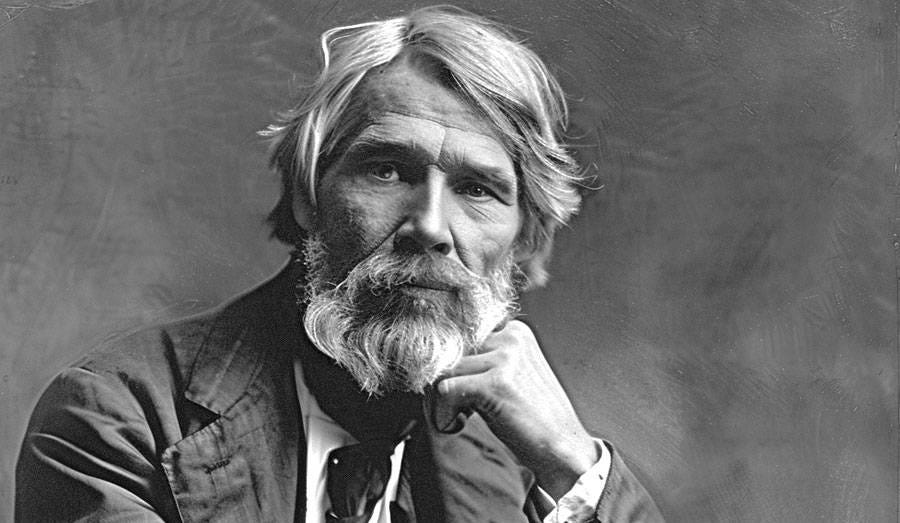The French Revolution: Beyond Liberty, Equality, Fraternity | Thomas Carlyle's Terrifying Truth
Most accounts of the French Revolution present a narrative arc driven by Enlightenment ideals, political maneuvering, and socioeconomic pressures. We learn about the fall of the Bastille, the Declaration of the Rights of Man, the Reign of Terror, and the rise of Napoleon through dates, key figures, and legislative acts. But then there is Thomas Carlyle's The French Revolution: A History, a work that shatters the mold of conventional historiography. Published in 1837, Carlyle's account is not a detached analysis but a torrential, prophetic, and often terrifying plunge into the very soul of the upheaval. He saw history not as a sequence of events, but as a dynamic, living force, a manifestation of deeper moral and spiritual truths.
Carlyle's approach is visceral, demanding engagement rather than passive reading. He paints history with broad, dramatic strokes, focusing on the underlying energies and inevitable consequences of human action and inaction. To truly grasp the visceral power Carlyle brings to this historical cataclysm, exploring different interpretations and discussions can be illuminating, such as the detailed analysis available here:
The Ancien Régime: A Hollow Sham Built on Lies
For Carlyle, the French Revolution wasn't simply caused by bad harvests or unfair taxes; it was the inevitable consequence of a society built on falsehoods, a spectacular implosion of an entire system rotten from the inside out. He depicted the Ancien Régime – the old order of monarchy and aristocracy – as a hollowed-out entity, obsessed with etiquette and appearances while ignoring the suffering of the masses. It was, in his vivid metaphor, a society "eating paper," consuming formulas, protocols, and empty promises while the reality of starvation and injustice gnawed at its foundations.
Carlyle saw the pre-revolutionary French elite as utterly disconnected from reality, believing their own elaborate fictions until the very moment the ground collapsed beneath them.
This systemic dishonesty, this fundamental lack of truth, created a pressure cooker environment. The elaborate rituals of Versailles, the complex hierarchies, the claims of divine right – all were seen by Carlyle as mere phantasms, unable to sustain themselves against the burgeoning reality of human desperation.
The Sans-culottes: An Elemental Force Unleashed
Where traditional histories might portray the revolutionary crowds – the Sans-culottes ("those without knee-breeches") – as a chaotic mob driven by base instincts, Carlyle saw something more profound. He viewed them as an elemental surge, the raw, untamed energy of the French people finally bursting forth after centuries of suppression. This force was both creative and terrifyingly destructive, a natural phenomenon akin to an earthquake or a volcano.
Carlyle doesn't necessarily romanticize the violence, but he presents it as an almost inevitable expression of long-repressed vitality. The storming of the Bastille, the September Massacres – these were not just political acts but eruptions of primal human energy, terrifying yet undeniable in their power. He forces the reader to confront the raw, often ugly, reality of what happens when the facade of civilization cracks.
The Reign of Terror: A Physical Recoil
Perhaps Carlyle's most unsettling interpretation concerns the Reign of Terror. He didn't view it merely as a period of political extremism orchestrated by figures like Robespierre. Instead, he framed it as an almost physical recoil – the violent, convulsive reaction of a body politic freeing itself from centuries of compression and artificiality. It was the inevitable, albeit horrific, consequence of the preceding falsehoods.
The guillotine, in this light, becomes a grim symbol of reality asserting itself, stripping away titles, privileges, and illusions with brutal efficiency. It's a terrifying perspective, suggesting that societal decay breeds monstrous reactions, a kind of natural law playing out on the historical stage.
Chaos Seeks Order: The Great Man
Amidst the swirling chaos, Carlyle identifies the emergence of powerful individuals who attempt to impose order, embodying his controversial "Great Man" theory of history. Figures like Danton, with his raw energy and pragmatic leadership, and ultimately Napoleon Bonaparte, represent for Carlyle the inherent tendency for chaos to eventually yield to decisive will. He argued that history is shaped significantly by the actions of extraordinary individuals – heroes or tyrants – who can harness the turbulent energies of their time.
Napoleon, in particular, is seen as the figure who finally tames the revolutionary beast, replacing the chaotic surge with disciplined authority. While not necessarily endorsing Napoleon's methods, Carlyle presents him as the necessary outcome, the strong hand required to end the convulsion and forge a new, albeit different, order.
A Metaphysical Upheaval
Ultimately, Carlyle presents the French Revolution as more than just a political or social event; it was a metaphysical one. It was a dramatic, terrifying illustration of fundamental truths about society, power, and human nature. It revealed the consequences of living by lies, the explosive power of repressed reality, and the eternal dance between chaos and order. He saw it as a moment where the underlying, often unseen, forces that govern human affairs burst violently into view.
His history is a moral drama, a testament to the idea that societies, like individuals, cannot indefinitely sustain themselves on insincerity and injustice. The collapse wasn't just political; it was a moral and almost spiritual reckoning.
Was Carlyle Right?
Carlyle's interpretation remains controversial. Critics point to his dramatic flourishes potentially obscuring factual nuance, his "Great Man" theory as elitist, and his views as sometimes anti-democratic. Yet, his work retains a compelling power precisely because it challenges us to look beyond simple explanations.
He forces us to consider the deeper currents beneath historical events. Was the French Revolution merely about liberty, equality, and fraternity, or was it also about the terrifying consequences of societal rot and the raw power of human nature unleashed? Was Carlyle right about the elemental forces at play? What unseen pressures and decaying structures shape our own societies today? His fiery, challenging perspective ensures that the French Revolution, through his eyes, remains a subject of vital and unsettling relevance.



